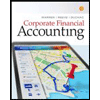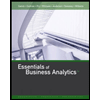
To determine: The number of periods of investment
Introduction:
The
Answer to Problem 5QP
The number of periods is as follows:
| Particulars | Years | Interest Rate | Future value | |
| Investment A | $560 | 15.59 | 6% | $1,389 |
| Investment B | $810 | 9.40 | 9% | $1,821 |
| Investment C | $18,400 | 26.41 | 11% | $289,715 |
| Investment D | $21,500 | 24.52 | 13% | $430,258 |
Explanation of Solution
Given information:
Investment A has a present value of $560, future value of $1,369, and an interest rate of 6 percent. Investment B has a present value of $810, future value of $1,821, and an interest rate of 9 percent.
Investment C has a present value of $18,400, future value of $289,715, and an interest rate of 11 percent. Investment D has a present value of $21,500, future value of $430,258, and an interest rate of 13 percent.
Formula:
Derive the formula to calculate the number of periods from the present value equation as follows:
The formula to calculate the number of periods:
Where,
“t” refers to the number of years or periods of investment
“ln” refers to the log value
“FV” refers to the future value
“PV” refers to the present value
“r” refers to the simple rate of interest
Compute the number of periods for Investment A:
Hence, the number of periods of Investment A is 15.59 years.
Compute the number of periods for Investment B:
Hence, the number of periods of Investment B is 9.40 years.
Compute the number of periods for Investment C:
Hence, the number of periods of Investment C is 26.41 years.
Compute the number of periods for Investment D:
Hence, the number of periods of Investment D is 24.52 years.
Want to see more full solutions like this?
Chapter 5 Solutions
Fundamentals of Corporate Finance
- Can anyone figure this out correctly? I keep getting the wrong answers over and over? Cost of Trade Credit Grunewald Industries sells on terms of 3/10, net 40. Gross sales last year were $4,161,000 and accounts receivable averaged $370,500. Half of Grunewald's customers paid on the 10th day and took discounts. What are the nominal and effective costs of trade credit to Grunewald's nondiscount customers? (Hint: Calculate daily sales based on a 365-day year, calculate the average receivables for discount customers, and then find the DSO for the nondiscount customers.) Do not round intermediate calculations. Round your answers to two decimal places. 1.) Effective cost of trade credit:arrow_forwardExplain how an increase in interest rates by a central bank could affect bond prices and stock market performance. Explanation.arrow_forwardWhat is the purpose of diversification in an investment portfolio, and how does it reduce risk?arrow_forward
- Explain how an increase in interest rates by a central bank could affect bond prices and stock market performance.arrow_forwardWhat is the purpose of diversification in an investment portfolio, and how does it reduce risk? Need help!arrow_forwardWhat are the key differences between a company’s income statement and its cash flow statement? Why are both important for financial analysis? Need help!arrow_forward
- What are the key differences between a company’s income statement and its cash flow statement? Why are both important for financial analysis?arrow_forwardWhat is the relationship between risk and return in finance, and how is this reflected in the Capital Asset Pricing Model (CAPM)? Explain.arrow_forwardDefine the time value of money (TVM). How does TVM influence decision-making in capital budgeting? Explanation.arrow_forward
- What is the relationship between risk and return in finance, and how is this reflected in the Capital Asset Pricing Model (CAPM)?arrow_forward3. Explain the concept of compounding. How does compounding impact the future value of an investment? Need help!arrow_forward3. Explain the concept of compounding. How does compounding impact the future value of an investment?arrow_forward
 Corporate Financial AccountingAccountingISBN:9781305653535Author:Carl Warren, James M. Reeve, Jonathan DuchacPublisher:Cengage Learning
Corporate Financial AccountingAccountingISBN:9781305653535Author:Carl Warren, James M. Reeve, Jonathan DuchacPublisher:Cengage Learning Essentials of Business Analytics (MindTap Course ...StatisticsISBN:9781305627734Author:Jeffrey D. Camm, James J. Cochran, Michael J. Fry, Jeffrey W. Ohlmann, David R. AndersonPublisher:Cengage Learning
Essentials of Business Analytics (MindTap Course ...StatisticsISBN:9781305627734Author:Jeffrey D. Camm, James J. Cochran, Michael J. Fry, Jeffrey W. Ohlmann, David R. AndersonPublisher:Cengage Learning College Accounting, Chapters 1-27 (New in Account...AccountingISBN:9781305666160Author:James A. Heintz, Robert W. ParryPublisher:Cengage Learning
College Accounting, Chapters 1-27 (New in Account...AccountingISBN:9781305666160Author:James A. Heintz, Robert W. ParryPublisher:Cengage Learning




